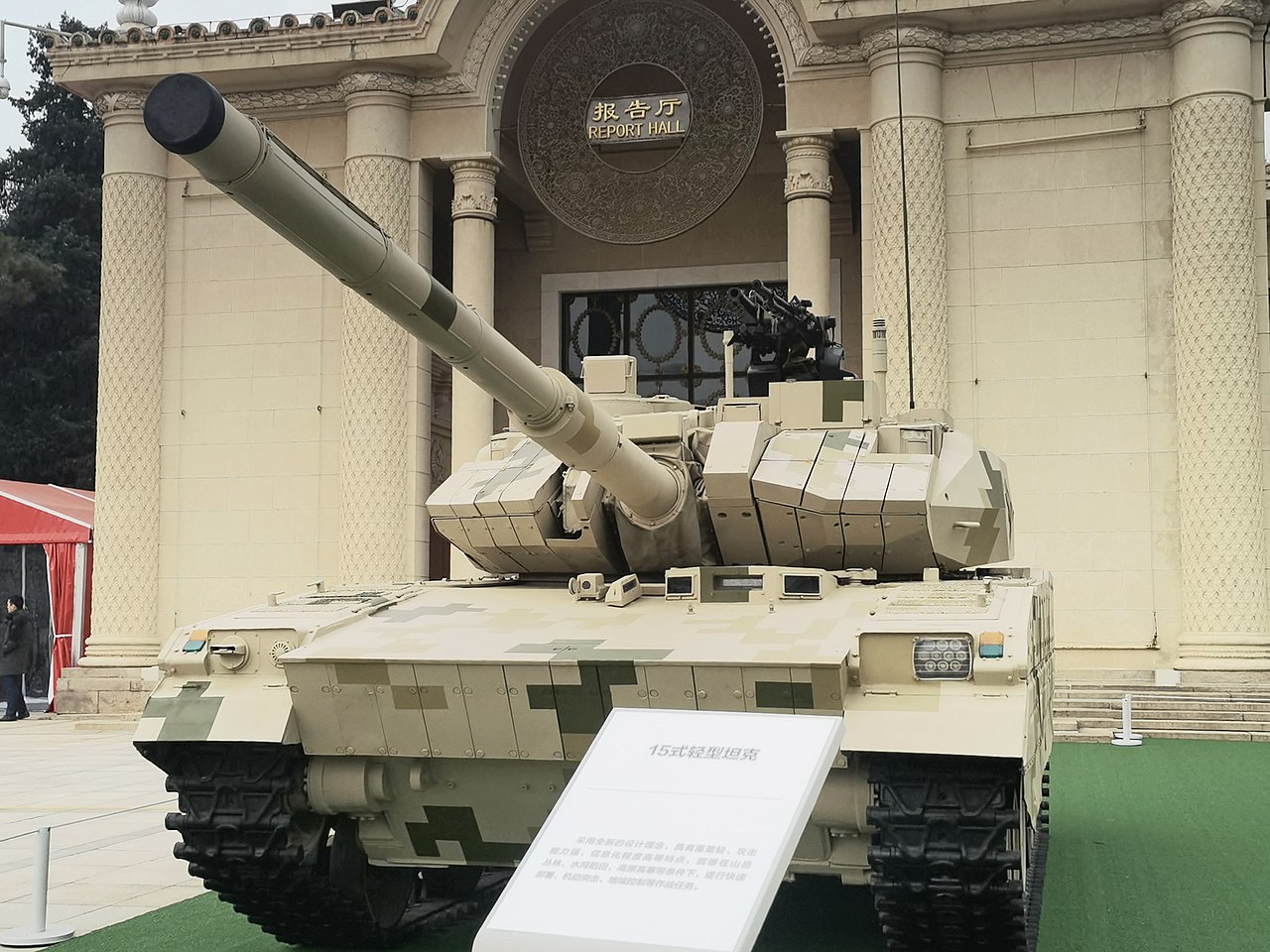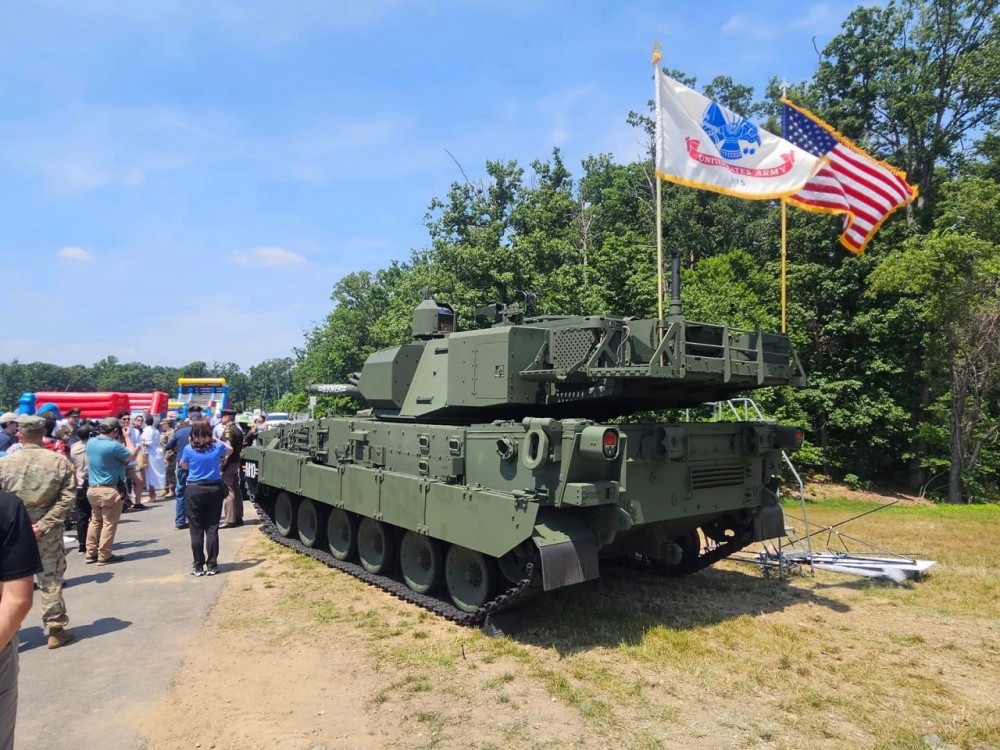On June 9, 2023, on the occasion of the U.S. Army Birthday, the latest American M10 Booker armored fighting vehicles, which were created according to the Mobile Protected Firepower (MPF) program, were demonstrated to the journalists.
MPF Program
MPF is part of the wider Next Generation Combat Vehicle (NGCV) program. It involves the creation of a new generation of armored vehicles, which will give army units new capabilities and replace the existing platforms, which are becoming outdated.
NGCV includes the following subprograms:
- Optionally Manned Fighting Vehicle (OMFV) – M2 Bradley IFV replacement
- Armored Multi-Purpose Vehicle (AMPV) – M113 Replacement
- Mobile Protected Firepower (MPF) – Fire Support Vehicle for Infantry Brigade Combat Teams (IBCT)
- Robotic Combat Vehicle (RCV) – three unmanned ground vehicles in light, medium and heavy configurations
- Decisive Lethality Platform (DLP) – M1 Abrams main battle tank replacement
The program started in 2017 after the previous one, – Ground Combat Vehicle (GCV) – was canceled. All projects are expected to be completed by 2035. Several companies participate in the tender: Lockheed Martin, GS Engineering, Hodges Transportation, Roush Industries, SAIC, and Moog Inc.
The Mobile Protected Firepower program is focused on creating a highly mobile, heavily armed platform. It would seem that it goes about the development of the latest light tank, as many experts write about it. But American army officials deny such a classification.
Two combat vehicles entered the final of the MPF competition: General Dynamics Land Systems (GDLS) Griffin II and the M8 AGS of BAE Systems.
M8 AGS
The М8 AGS by BAE Systems, in fact, is a reincarnation of the project from the old M551 Sheridan tank replacement program. The vehicle is named Ridgeway.

Ridgeway has been developed since the early 1980s by FMC Corporation and United Defense. The program has gone through many reformattings and changes. In 1995, the M8 tank was adopted by the U.S. Army, but in 1997, the M8 program was phased out before mass production could begin due to funding cuts. Only six units of the M8 were produced.
Preference was given to the wheel destroyer of M1128 Mobile Gun System (MGS) tanks based on the Stryker armored personnel carrier.
The project of FMC Corporation and United Defense was conceived as a completely new combat vehicle, that combined high mobility, security, and firepower. The machine was made of 5083 aluminum alloy, which provides a much lower weight compared to steel.
The vehicle had three modular armor levels:
- The Level I (basic) armor package consisted of ceramic armor tiles and protected the vehicle against small-arms fire and shell splinters. It was designed for the rapid deployment and could be airdropped from a C-130. All-up weight was 18,100 kg.
- The Level II armor package consisted of additional plates of titanium, hardened steel and expanded metal. At an all-up weight of 20,081 kg, Level II-armored AGS could still be carried by C-130, but could not be air-dropped.
- Level III armor consisted of bolt-on armor boxes, and is designed for contingency operations and provides protection against light handheld anti-tank weapons. Level III-armored AGS systems cannot be carried by C-130. All-up weight is 24,000 kg.
- M8 AGS Ridgeway with Level II armor package
- M8 AGS Ridgeway with Level III armor package
The tank was supposed to drive the 550 horsepower Detroit Diesel 6V 92TA engine; it was supposed to provide a speed of 45 kilometers per hour, and its range was 480 kilometers.
The fighting vehicle was armed with a М45 105mm gun, a twin М240 7.62mm machine gun, and a Browning M2 12.7mm machine gun. It was also possible to install a Mk19 grenade launcher.
The tank was equipped with an auto-loader and the crew consisted of three people.
Due to the specifics of the vehicle, it did not receive customers abroad. By 1996, all work had been completed, and the American army planned to purchase about 237 of these combat vehicles.
Griffin
General Dynamics unveiled its first similar technology at the AUSA 2016 event. GDLS immediately positioned its combat vehicle as a contender for the MPF program.
The chassis of the Griffin tank, which was shown on AUSA, came from the British Scout SV (Ajax) program. The welded aluminum turret was armed with an XM360 120mm light gun. The gun was developed as part of the cancelled Future Combat Systems (FCS) program.

There are three variants of the Griffin tank:
- Griffin I – a prototype with a 120mm gun introduced in 2016, weighs 27-28 tons.
- Griffin II is a fire support vehicle with a 105mm gun that was adopted into service, andweighs 38 tons.
- Griffin III – IFV with a 50mm gun for the Optionally Manned Fighting Vehicle program for the potential replacement of the Bradley M2, weighs 38-50 tons.
The crew of the tank consists of four people.
MPF Competition
In its request in 2015, the Army stated that it expected the MPF to interact with other NGCV vehicles. It was also important to the Pentagon that the MPF could operate in “harsh and unpredictable locations.”
The Pentagon decided not to require the contestants to be airborne. As of 2021, only the AGS M8 was airborne, according to an Army Futures Command official.
In November 2017, in order to enhance competition among manufacturers, the U.S. Army announced its plans to increase the number of vehicles to 504 units.
- M8 AGS
- Griffin II
In December 2018, the Army awarded the two companies contracts for the fast creation of prototypes for the MPF contracts, which would not exceed $376 million.
GDLS delivered its Griffin II prototypes in December 2020. BAE has faced manufacturing difficulties and supplier issues related to the COVID-19 pandemic, causing deliveries to be delayed until March 2021.
The assessment phase began in January 2021 at Fort Bragg, and the trial was scheduled for June 2021.
In March 2022, BAE was disqualified from the competition due to “mismatch issues,” leaving GDLS as the only option.
The GDLS Griffin II was finally selected in June 2022. The original contract calls for 96 vehicles, with the first delivery by the end of 2023.
M10 Booker
The United States Army issued the Griffin II with М10 Index, formerly held by a World War II tank destroyer with the unofficial name Wolverine. The tank was named Booker after two American soldiers at once. In honor of Private Robert Booker, who died in the North African campaign during World War II, and Staff Sergeant Stevon Booker, who was the commander of the Abrams tank during the war in Iraq.

The M10 Booker is classified as a “light tank” by the military community. Instead, the U.S. military claims it is a “fire support vehicle.” Booker must fill the niche between the M1 Abrams tank and the M2 Bradley IFVs.
It is planned that the latest combat vehicle will remain in service for approximately 30 years.
To date, the U.S. Army plans to acquire 504 vehicles, but the final number is subject to change. Each Infantry Brigade Combat Team (IBCT) is scheduled to be allocated fourteen M10. Four battalions of M10 are scheduled to be deployed by 2030, and the majority of the contract is expected to be fulfilled by 2035.
- M10 Booker rear view
- M10 Booker front view
Analogues
There are not many analogues of such tracked vehicles around the world; notable examples include the Chinese Type 15, the Turkish-Indonesian Kaplan, and the Russian Sprut-SD, albeit with some stretch.
The Type 15 is a light tank in service with the PLA since 2018. The vehicle is designed to operate in conditions in the highlands, forests, and swamps, where the ZTZ-99 and ZTZ-96 main battle tanks can have problems with maneuverability.
The tank is armed with a 105mm rifled gun with an effective range of up to 3 kilometers and is compatible with all available ammunition in this caliber in service with the Chinese Army.

The tank tower is equipped with a charging machine that reduces the crew to three people. The Type 15 has two armor sets. A standard one, having steel armor protection with additional layers of advanced composite armor panels covering the tank turret, hull, and sides, with additional light reactive armor modules protecting the front part of the hull.
The second package contains heavier reactive armor modules in addition to composite armor panels underneath, covering the entire turret and tank hull. For additional protection, armor with ERA and slat armor can also be installed on the tank hull’s side and aft parts.
The tank has a weight of 33 tons with standard armor and 36 tons with the second package. The 8V132 engine has 1000 horsepower. The maximum speed on roads is up to 70 kilometers per hour.
Kaplan is a light tank jointly developed by the Turkish company FNSS and the Indonesian Pindad. The name of the tank development program is Modern Medium Weight Tank (MMWT).
The tank is called Kaplan in Turkey and Harimau in Indonesia. The vehicle is armed with a Cockerill CT-CV 105HP 105mm rifled gun. The turret has an autoloader machine.

The armor of the tank is modular; it belongs to the STANAG 4569 4 level protection category, which means that the tank can withstand 14.5×114mm armor-piercing shells at a distance of 200 meters at a speed of 911 m/s.
The bottom of the tank has a V-shaped design; it can withstand the explosion of 10 kilograms of explosives. Thanks to its modularity, the armor can be supplemented with up to a fifth level of protection. The crew consists of three people.
The tank has a Caterpillar C13 engine with a capacity of 711 horsepower, which provides a speed of up to 78 kilometers per hour by road.
The only airborne, amphibious analogue is the Russian 2S25 Sprut-SD, whose development began in the 1980s.
In 1984, the tactical and technical requirements for the creation of the Sprut-SD were approved, and on October 20, 1985, the development of a new vehicle for the needs of the Soviet Airborne Forces began.
In February 1986, the development of landing equipment for the 2S25 self-propelled guns began. Due to a problem with this equipment, the tests were frozen. In 2001, additional tests were carried out. On January 9, 2006, by order of the Minister of Defense of the Russian Federation, the 2S25 self-propelled anti-tank gun was adopted by the Russian Army.

The vehicle is armed with a 2А46 125mm smoothbore gun, which can use armor-piercing sub-caliber, HEAT, HE-frag shells, anti-tank, and high-explosive guided missiles.
The turret is equipped with an autoloader machine that provides a rate of fire of up to 7 rounds per minute.
The hull is made of welded sheets of armored aluminum, which provides protection for the vehicle against 12.7mm bullets in the ± 40° sector, as well as circular protection from 7.62mm bullets and fragments of artillery shells.
The Sprut weighs 18 tons, and the vehicle drives the 2V062S diesel engine with a capacity of 510 horsepower. The maximum speed reaches up to 70 kilometers per hour by road and up to 40 on rough terrain.
In addition, a combat vehicle can force water obstacles at speeds of up to 9 kilometers per hour. Sprut can be transported by Il-76, An-124 aircraft and Mi-26 helicopters.
Conclusion
The M10 Booker has become the first vehicle of its kind to be adopted by the U.S. Army in the past twenty years. The demand for such armored vehicles is justified by the Pentagon’s objective to enhance mobility and rapid force deployment in any region of the world, filling the gap between tanks and IFVs.
In a global context, the demand for such vehicles can be driven by the cost of modern Main Battle Tanks (MBTs), which can reach up to $30 million.
In addition, such machines can be used in regions where the patency of traditional MBTs can be difficult due to the rugged terrain of mountains, swamps, forests, and, in the context of the Indo-Pacific region, islands, some of which combine these conditions.
SUPPORT MILITARNYI
Even a single donation or a $1 subscription will help us contnue working and developing. Fund independent military media and have access to credible information.


 Роман Приходько
Роман Приходько 
 Віктор Шолудько
Віктор Шолудько 
 Андрій Харук
Андрій Харук 

 Андрій Тарасенко
Андрій Тарасенко 
 Yann
Yann 
 СПЖ "Водограй"
СПЖ "Водограй" 

 ГО "Військова школа "Боривітер"
ГО "Військова школа "Боривітер" 

 Катерина Шимкевич
Катерина Шимкевич 
 Олександр Солонько
Олександр Солонько 
 Андрій Риженко
Андрій Риженко 









